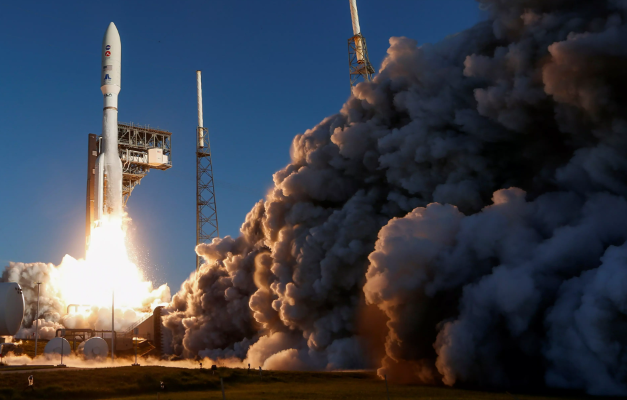Breakthroughs in Space Exploration: Latest Discoveries and Missions
Introduction:
Space exploration has always captivated the imagination of humanity, offering glimpses into the mysteries of the cosmos and pushing the boundaries of scientific knowledge. In recent years, significant breakthroughs in space exploration have paved the way for groundbreaking discoveries, technological advancements, and ambitious missions to explore the far reaches of the universe. In this article, we will delve into the latest breakthroughs in space exploration, highlighting key discoveries, missions, and advancements that are reshaping our understanding of the cosmos and shaping the future of space exploration.
1. Discoveries Beyond Our Solar System:
One of the most exciting developments in space exploration is the discovery of exoplanets – planets orbiting stars outside our solar system. Over the past decade, astronomers have identified thousands of exoplanets using ground-based telescopes, space telescopes, and advanced observational techniques. These discoveries have revolutionized our understanding of planetary systems and the potential for life beyond Earth.
Recent breakthroughs in exoplanet research include the detection of potentially habitable worlds – planets with conditions suitable for liquid water and, potentially, life as we know it. The discovery of exoplanets orbiting within the habitable zone of their parent stars has raised hopes of finding Earth-like worlds capable of harboring life.
Additionally, advancements in exoplanet characterization techniques, such as spectroscopy and transit observations, have allowed scientists to study the atmospheres of exoplanets and search for signs of biological activity or habitability. These discoveries are shaping the search for life beyond Earth and informing future missions to study exoplanet atmospheres and surfaces in greater detail.
2. Mars Exploration and Sample Return Missions:
Mars has long been a focal point of space exploration, with multiple missions sent to study the Red Planet’s geology, climate, and potential for past or present life. In recent years, Mars exploration has reached new heights, with groundbreaking discoveries and ambitious missions paving the way for future human exploration.
One of the most significant breakthroughs in Mars exploration is the discovery of evidence for ancient water flows and geological features indicative of past habitable conditions. Rovers such as Curiosity and Perseverance have uncovered evidence of ancient lakes, rivers, and deltas, suggesting that Mars may have once harbored life-friendly environments.
Furthermore, NASA’s Perseverance rover, launched in 2020, is equipped with advanced instruments and a sample collection system designed to collect and store Martian rock and soil samples for future return to Earth. This landmark mission represents a crucial step towards the long-awaited goal of Mars sample return, which could provide invaluable insights into the planet’s history, geology, and potential for life.
3. Interstellar Exploration and Voyager Missions:
Voyager 1 and Voyager 2, launched in 1977, have become iconic symbols of humanity’s quest to explore the outer reaches of the solar system and beyond. These pioneering spacecraft have surpassed all expectations, journeying far beyond the planets and venturing into interstellar space – the vast expanse between stars.
In recent years, Voyager 1 and Voyager 2 have provided unprecedented insights into the outer planets, their moons, and the boundary regions of the heliosphere – the bubble of space dominated by the Sun’s influence. Voyager 1 has entered interstellar space, becoming the first human-made object to venture beyond the solar system’s boundaries, while Voyager 2 continues to explore the outer reaches of the heliosphere.
These missions have yielded groundbreaking discoveries, including the detection of interstellar particles, magnetic fields, and cosmic rays beyond the influence of the Sun. Voyager’s ongoing journey into interstellar space continues to provide valuable data on the dynamics of the interstellar medium and the boundaries of the solar system.
4. Commercial Spaceflight and Private Exploration:
In recent years, the landscape of space exploration has been transformed by the rise of commercial spaceflight and private exploration initiatives. Companies such as SpaceX, Blue Origin, and Virgin Galactic are leading the charge in democratizing access to space, developing innovative spacecraft, and pioneering new approaches to space exploration.
SpaceX’s Falcon rockets and Dragon spacecraft have revolutionized space travel, enabling cargo resupply missions to the International Space Station (ISS), crewed spaceflights, and ambitious missions to the Moon and Mars. The company’s Starship spacecraft, currently in development, aims to enable human missions to Mars and beyond, ushering in a new era of interplanetary exploration.
Similarly, Blue Origin and Virgin Galactic are developing suborbital space tourism vehicles designed to offer civilians the opportunity to experience weightlessness and see Earth from space. These companies are opening up new possibilities for space tourism, research, and commercial activities in low Earth orbit (LEO), paving the way for a vibrant and sustainable space economy.
Conclusion:
The latest breakthroughs in space exploration are reshaping our understanding of the cosmos, pushing the boundaries of scientific knowledge, and inspiring the next generation of space explorers. From the discovery of exoplanets and the search for life beyond Earth to Mars exploration and interstellar missions, humanity’s quest to explore the universe is more ambitious and exciting than ever before.
As we continue to push the limits of space exploration, it is essential to prioritize international collaboration, scientific inquiry, and responsible stewardship of the cosmos. By working together, sharing knowledge, and embracing the spirit of exploration, we can unlock the mysteries of the universe, expand humanity’s presence in space, and pave the way for a future among the stars.
For more information visit: elmzaango.com
For more information visit: newsburing.com
